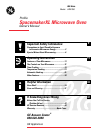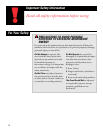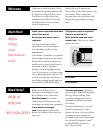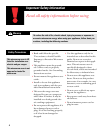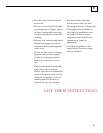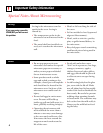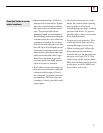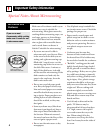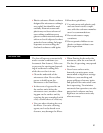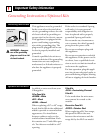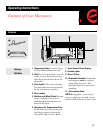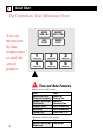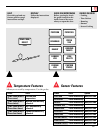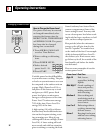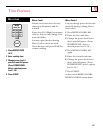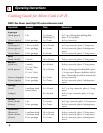
9
• Plastic cookware—Plastic cookware
designed for microwave cooking is
very useful, but should be used
carefully. Even microwave-safe
plastic may not be as tolerant of
overcooking conditions as are
glass or ceramic materials and may
soften or char if subjected to short
periods of overcooking. In longer
exposures to overcooking, the
food and cookware could ignite.
Follow these guidelines:
1
Use microwave-safe plastics only
and use them in strict compli-
ance with the cookware manufac-
turer’s recommendations.
2
Do not microwave empty
containers.
3
Do not permit children to use
plastic cookware without com-
plete supervision.
The Vent Fan
The fan will operate automatically
under certain conditions (see
Automatic Fan feature). Take care
to prevent the starting and spread-
ing of accidental cooking fires
while the vent fan is in use.
• Clean the underside of the
microwave often. Do not allow
grease to build up on the
microwave or the fan filters.
• In the event of a grease fire on
the surface units below the
microwave oven, smother a flam-
ing pan on the surface unit by
covering the pan completely with
a lid, a cookie sheet or a flat tray.
• Use care when cleaning the vent
fan filters. Corrosive cleaning
agents, such as lye-based oven
cleaners, may damage the filters.
• When flaming foods under the
microwave, turn the vent fan off.
The fan, if operating, may spread
the flame.
• Never leave surface units,
beneath your microwave oven,
unattended at high heat settings.
Boilovers cause smoking and
greasy spillovers that may ignite
and spread if the microwave vent
fan is operating. To minimize
automatic fan operation, use ade-
quate sized cookware and use
high heat on surface units only
when necessary.



